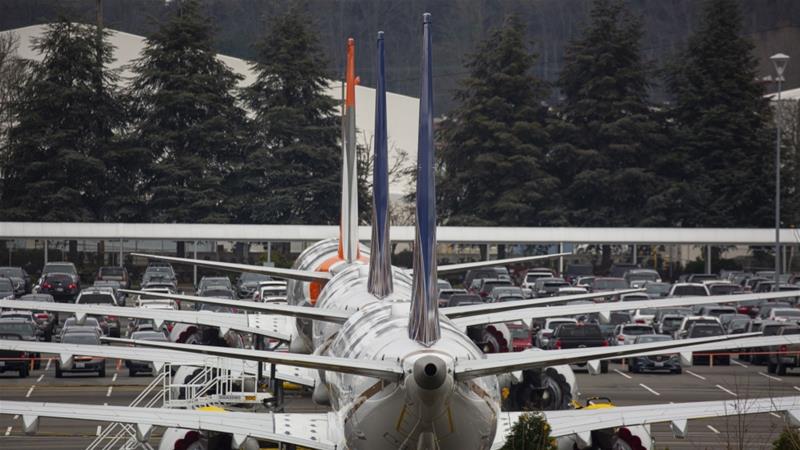Boeing Co. has identified a new software flaw in the grounded 737 Max that will require additional work, possibly further delaying the plane’s return to service.
The company alerted the U.S. Federal Aviation Administration and is notifying customers and its suppliers, it said in an emailed statement. Boeing’s best-selling jet was grounded on March 13 after two fatal crashes involving a flight-control system.
The issue involves how software on the plane checks itself to ensure it’s receiving valid data, said a person familiar with the issue who wasn’t authorized to speak publicly about it. It occurs when the system is initially starting up, the person said.
“We are making necessary updates and working with the FAA on submission of this change, and keeping our customers and suppliers informed,” Boeing said in its statement. “Our highest priority is ensuring the 737 MAX is safe and meets all regulatory requirements before it returns to service.”
The FAA didn’t comment directly on the latest issue to arise on the problem-plagued plane. “We continue to work with other international aviation safety regulators to review the proposed changes to the aircraft,” the agency said in an emailed statement. “Our first priority is safety, and we have set no time-frame for when the work will be completed.”
The 737 Max is costing the plane-maker billions of dollars in losses. The software problem was discovered during the final validation review process of the updates being installed on the plane, the person said.
It’s unclear how time-consuming the repair will be. Software systems on aircraft require a far higher degree of reliability and checks before approval compared to consumer products. But the issue could be relatively narrow and therefore not nearly as complex as other work on the software.
News of the flaw sent Boeing shares down as far as $323, less than $3 from their closing low after the second Max crash. The stock closed down 2.3% in New York at $324.15, the day’s biggest loser on the Dow Jones Industrial Average. Boeing’s long-term issuer default rating was downgraded by Fitch to A- from A.
The discovery has already pushed Boeing’s work back by at least a week, said another person familiar with the matter who also wasn’t authorized to speak about it. It’s unclear how much longer it will take to complete fixes, the person said.
The issue is in the plane’s flight-control computer software. It was confined to how it performs validation checks during startup and doesn’t involve its function during flight, the people said.
The problem came to light when the latest version of the software was loaded onto an actual aircraft, according to one of the people. While it has been tested on planes in flight, most of the software reviews have occurred in a special simulator used by engineers on the ground.
Airlines have already built months of delay into their schedules to resume flying the plane, so it’s possible the software work won’t require additional changes. Southwest Airlines Co., American Airlines Group Inc. and United Airlines Holdings Inc. have said they won’t fly the plane again until June.
“Boeing has made us aware of the issue but it’s too early to provide any indication regarding potential impact to timing” of the plane’s return to service, said Brandy King, a Southwest spokeswoman.
Carriers have said they’ll need to adopt new pilot training and to work on planes to prepare them for service once the grounding is lifted by the FAA.
Boeing announced on Jan. 7 that it will recommend pilots undergo additional simulator training on the Max, a reversal of their long-held view that crews qualified on other 737 models only needed computer-based instruction. That action makes it more likely the FAA and other nations will require the additional training.
The crash of a Lion Air 737 Max on Oct. 29, 2018, and an Ethiopian Airlines plane on March 10 both occurred after a system known as Maneuvering Characteristics Augmentation System repeatedly pushed the planes into dives. Pilots in both cases were able to temporarily maintain control, but eventually the jets entered steep dives and crashed.
Boeing has been working for more than a year on fixing software to ensure that MCAS is safe. The process has been bumpy at times as new glitches arose and tension flared with regulators.
During the process of assessing the plane last year, Boeing discovered another issue and had to redesign its flight-control computers. The reworking of that software has been one of the reasons that the repairs have taken so long.
A Boeing audit of the aircraft at the end of last year also discovered that wiring on the plane was potentially vulnerable to short-circuits that could trigger flight-control problems. That will require moving some wiring in the plane.
SOURCE: Bloomberg



